
Rise

What if you could ensure that you'd never run out of hot water again during a shower while simultaneously saving energy on your monthly utility bills? Tankless water heaters, known as on-demand water heaters, are easiest and most cost-effective ways to lower your energy bills quickly. The more conventional tank-style heaters utilize an enormous amount of energy to heat anywhere between 40 to 120 gallons of water around the clock, even when no one is in the home. Water heater timers can help you cut back on the energy associated with hot showers. The US Department of Energy reports that 17 percent of total household energy usage is consumed by water heating. In most homes, that's more than all other household appliances combined.
Below, we offer a complete guide to how you can switch to tankless water heaters to save energy and money.
The majority of homeowners continue to rely on large, bulky, inefficient tank-style water heaters for their homes. As we mentioned in the introduction, the main drawback to these types of water heaters is that they require an enormous amount of energy to keep water hot 24 hours a day. While you're at work or school or on a two-week vacation, your water heater will continue to either use gas or electricity to heat that water.

Tankless water heaters heat water on demand, without relying on any storage tank. When someone in the household turns on the hot water tap, the cold water will travel through the heater where the water is instantaneously heated. There are both electric and gas tankless water heaters available.
There are essentially two different ways to set up a tankless water heater in your home: a more extensive, centralized heater that delivers hot water to the entire home or point of use (POU) heaters, located near the faucets, showerheads, or appliances to which they will be explicitly delivering hot water.
With on-demand gas water heaters, a small gas burner can run off propane or natural gas. One of the main pros of gas on-demand water heaters is that it generally allows for higher flow rates, in some cases up to 5 gallons per minute (GPM). This amount will give you more than enough hot water flow to run several faucets or appliances at once.
The main drawback of using gas is that your home will continue to rely on fossil fuel sources of energy instead of transitioning into an all-electric home powered entirely by renewable sources of energy. In addition, gas-powered on-demand water heaters require ventilation outside the house, thus increasing installation costs. However, Rise estimates that a gas-powered water heater could save your family around $100 each year, allowing for a payback period between 2 and 6 years.

A tankless electric water heater utilizes a powerful electric heating element that instantaneously heats water as it passes through the unit. Homeowners can expect this type of on-demand heater to deliver an average savings of $100 per year. Though these types of tankless water heaters do not require any ventilation, the powerful heating element might need some homeowners to upgrade their home's electrical panel.
There are essentially two different ways to set up a tankless water heater in your home: a more extensive, centralized heater that delivers hot water to the entire home or point of use (POU) heaters, located near the faucets, showerheads, or appliances to which they will be explicitly delivering hot water.
The advantage of more extensive and centralized on-demand water heaters is that they generally require less plumbing and electrical or gas connections. This feature results in lower installation costs. A centralized on-demand water heater is still significantly smaller than a tank-style heater. It can be discretely located in several locations around the home. One of the cons of tankless electric heaters is that the device might not provide enough hot water for multiple, simultaneous uses if they are undersized. For example, if you are showering and running the dishwasher simultaneously, the heat load may be too much for the water heater. The result will be lukewarm (instead of hot) water delivery to both appliances.
Point of use tankless water heaters is generally much smaller than centralized versions. They are made to be small, to fit in tiny places, like cupboards underneath your sink or in the bathroom closet near your showerhead. The Energy Star Program states: "Adding a POU at the fixture may be the best option in terms of system-wide energy efficiency, especially compared to the alternative of increasing the temperature setting of a storage water heater."
Point of use, tankless water heaters are generally a good option for households with relatively low hot water requirements (20-25 gallons per day). The main disadvantage is that you'll have to install several tankless heaters wherever you want hot water available. A 3,500 square foot home with five bathrooms, then, would probably not be an ideal candidate for POU heaters.
However, POU on-demand water heating can allow homeowners greater control over where hot water is directed. For example, though hot showers are indeed a luxury that most of us have come to depend on, do we need a hot water plumbing fixture attached to our washing machine? Between 80 and 90 percent of the energy used by a washing machine is used for heating water. By simply omitting a hot water connection (and only using the cold setting on our washers), we can radically reduce power consumption during laundry day.

The size of a tankless water heater refers to both the temperature rise and the flow rate. The temperature rise is how hot the device can heat water. The flow rate refers to the number of gallons of water effectively heated and distributed to the home.
If you decide to opt for point-of-use heaters, most of these smaller options come in predetermined sizes and flow rates. For example, a typical POU heater will have a temperature rise between 65 and 75 degrees Fahrenheit and a flow rate of between 1 and 5 GPM. Smaller, under-the-sink types of POU heaters that only heat water for faucets might have lower flow rates of 0.5 GPM.
To properly size the water heater for POU uses, consider your faucet or showerhead's flow rate. Low-flow showerheads generally have a flow rate of about 2.5 GPM, so you'll need an option that has a flow rate at least equal to that. For centralized tankless water heaters, the average flow rate is usually between 4 and 8 GPM. Gas-powered on-demand heaters generally allow for a higher flow rate than their electric counterparts.
To correctly determine the optimum size of your tankless water heater, you'll need to ask yourself the following:
Let's say you need a tankless water heater to power two showers and two sinks.

Unless you have serious DIY construction abilities, you will most likely want to hire a professional for installation. On-demand gas heaters will require the installation of vents. Electric heaters will require electrical connections that you'll not want to fool around with unless you have some electrical knowledge. In addition, there can be several building elements, such as mandatory gas shut-off valves, that professional installers will know about and how to install correctly. If you have the skills and choose to self-install your tankless water heater, the following YouTube instructional video is an excellent place to start.
With so many economic and energy efficiency benefits, why isn't everyone installing tankless water heaters? The main downside is that for larger homes with several bathrooms, even the largest on-demand heater might not be able to simultaneously deliver hot water to all your plumbing connections at once. For example, if a family of six all takes showers in their private bathrooms simultaneously, this could lead to only lukewarm shower temperatures.
Shop water heater products that have been vetted for your health, wealth, and the planet.

Stiebel Eltron
Out of Stock

Stiebel Eltron
In Stock

Stiebel Eltron
In Stock
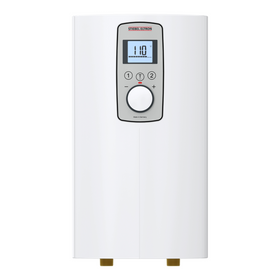
Stiebel Eltron
In Stock
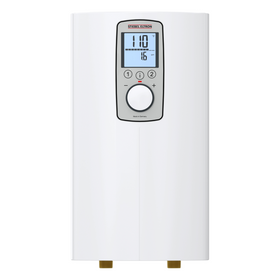
Stiebel Eltron
In Stock
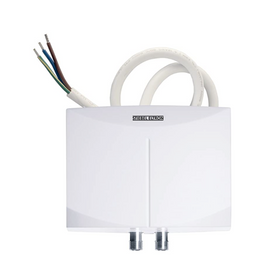
Stiebel Eltron
In Stock
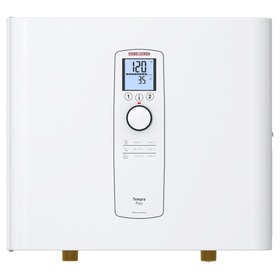
Stiebel Eltron
In Stock
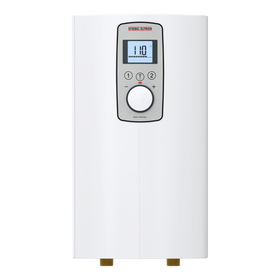
Stiebel Eltron
In Stock
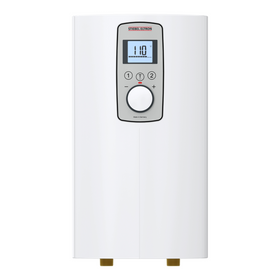
Stiebel Eltron
In Stock
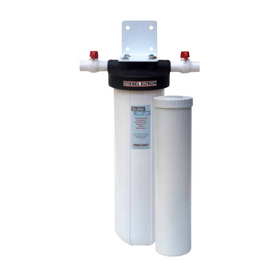
Stiebel Eltron
In Stock

Another prohibitive aspect of tankless water heaters is the upfront cost. Though there are lower-priced models for sale, some expert websites estimate that homeowners should expect to pay between $1,000 and $3,000 for a centralized, on-demand water heater, with gas heaters being more expensive. Though this is significantly more than a storage-style heater, it is worth mentioning that on-demand water heaters have an expected lifespan of 20 years, about double that of a tank-style heater. Smaller POU water heaters, however, are significantly less expensive. This 2.5 gallon Bosch electric on-demand heater costs under $150 on Amazon.
Whether you choose a point of use option or a centralized on-demand water heater, the energy savings, when compared to a traditional water heater, will eventually offset the higher upfront investment. Alternatively, depending on the unit's cost, since it can take many years to recoup your investment. So, you may want to consider installing a simple water heater timer to your existing tank or investing in a heat pump water heater, which is likely to save more money annually than a tankless unit.
Tobias runs an agroecology farm and a natural building collective in the mountains of El Salvador. He specializes in earthen construction methods and uses permaculture design methods to integrate structures into the sustainability of the landscape.




